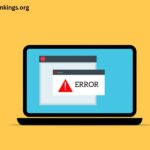In today’s digital landscape, the rise of cybersecurity threats has made it imperative for organizations to adopt robust protective measures. One of the challenges that has surfaced is email spoofing, a tactic often employed by malicious actors to impersonate legitimate entities. This article will explore the concept of Zix Appriver Google Workspace spoofing, its implications, and strategies for mitigation.
What is Email Spoofing?
Email spoofing is a form of cyberattack where the sender’s address is forged to make it appear as though the email is coming from a trusted source. This deception can lead to various harmful outcomes, including data breaches, financial fraud, and the spread of malware. Spoofing can exploit weaknesses in email authentication protocols, making it critical for organizations to understand the risks associated with this practice.
The Role of Zix and Appriver
Zix and Appriver are prominent players in the email security industry, offering solutions to protect businesses from various email threats. Zix is known for its email encryption services, while Appriver specializes in a range of cloud-based security solutions, including email filtering and anti-phishing measures. Both companies are utilized widely within Google Workspace environments to enhance security and safeguard sensitive communications.
Zix’s Features
Zix provides an advanced encryption solution that automatically secures sensitive emails, ensuring that only intended recipients can access the information. Their services are designed to protect healthcare, financial, and legal communications, which often contain confidential data.
Appriver’s Offerings
Appriver, on the other hand, focuses on comprehensive email security that includes spam filtering, malware protection, and phishing detection. Their solutions are particularly beneficial for organizations using Google Workspace, as they integrate seamlessly with the platform, offering additional layers of security.
Google Workspace and Its Vulnerabilities
Google Workspace (formerly G Suite) is a suite of cloud computing, productivity, and collaboration tools developed by Google. While it offers robust security features, it is not immune to spoofing attacks. Cybercriminals often exploit the trust users place in Google Workspace to execute their schemes.
Common Spoofing Techniques
- Display Name Spoofing: Attackers may use a familiar display name to trick users into believing the email is legitimate, even if the actual email address is different.
- Domain Spoofing: This involves impersonating a legitimate domain to make emails appear as though they are coming from a trusted source.
- Compromised Accounts: Attackers may gain access to a legitimate account and use it to send spoofed emails, making detection more difficult.
The Implications of Zix Appriver Google Workspace Spoofing
Spoofing can have serious ramifications for businesses, particularly when it involves sensitive information protected by regulations such as HIPAA or GDPR. The implications of a successful spoofing attack include:
Financial Loss
Spoofed emails can be used to trick employees into transferring funds or providing sensitive information, leading to significant financial loss.
Reputation Damage
A successful spoofing attack can tarnish an organization’s reputation, leading to a loss of customer trust and potential legal consequences.
Data Breach
Spoofing attacks can be a precursor to more extensive data breaches, where attackers gain access to sensitive information, compromising the integrity of the organization.
Mitigating Spoofing Risks
While no security measure can provide complete protection, organizations can implement several strategies to reduce the risks associated with email spoofing.
1. Implement Email Authentication Protocols
SPF (Sender Policy Framework), DKIM (DomainKeys Identified Mail), and DMARC (Domain-based Message Authentication, Reporting & Conformance) are essential tools for authenticating emails and preventing spoofing.
- SPF allows domain owners to specify which IP addresses are permitted to send emails on behalf of their domain.
- DKIM adds a digital signature to emails, ensuring that they have not been altered during transit.
- DMARC builds on SPF and DKIM by providing a mechanism for domain owners to receive reports about email spoofing attempts.
2. Educate Employees
Training employees to recognize signs of email spoofing is critical. Organizations should conduct regular training sessions to teach staff how to identify suspicious emails, such as:
- Check for inconsistencies in the sender’s email address.
- Look for poor grammar or spelling errors.
- Be wary of unexpected attachments or links.
3. Use Advanced Email Filtering Solutions
Utilizing advanced email filtering solutions, such as those offered by Zix and Appriver, can significantly enhance security. These tools can identify and block spoofed emails before they reach the inbox.
4. Monitor Email Activity
Regularly monitoring email activity can help organizations detect unusual patterns that may indicate a spoofing attack. Implementing alerts for suspicious activities, such as logins from unknown devices or locations, can provide early warning signs.
5. Report Spoofing Attempts
Encouraging employees to report suspected spoofing attempts can help organizations respond swiftly to potential threats. Establishing a clear reporting protocol can aid in tracking and mitigating attacks.
6. Regularly Update Security Protocols
Cyber threats are constantly evolving, making it essential for organizations to regularly update their security protocols and software. Keeping systems up to date ensures that the latest security patches are applied, minimizing vulnerabilities.
Conclusion
As the digital landscape continues to evolve, the threat of email spoofing remains a significant concern for organizations, particularly those utilizing platforms like Google Workspace. Understanding the implications of Zix Appriver Google Workspace spoofing is crucial for businesses aiming to safeguard their sensitive information.
By implementing robust email authentication protocols, educating employees, utilizing advanced filtering solutions, and monitoring email activity, organizations can significantly reduce their risk of falling victim to spoofing attacks. As cybercriminals become increasingly sophisticated, a proactive approach to cybersecurity will be key to maintaining the integrity and trustworthiness of digital communications.
By prioritizing email security, businesses can foster a safe online environment, protecting their operations, clients, and reputation from the detrimental effects of spoofing and other cyber threats.



